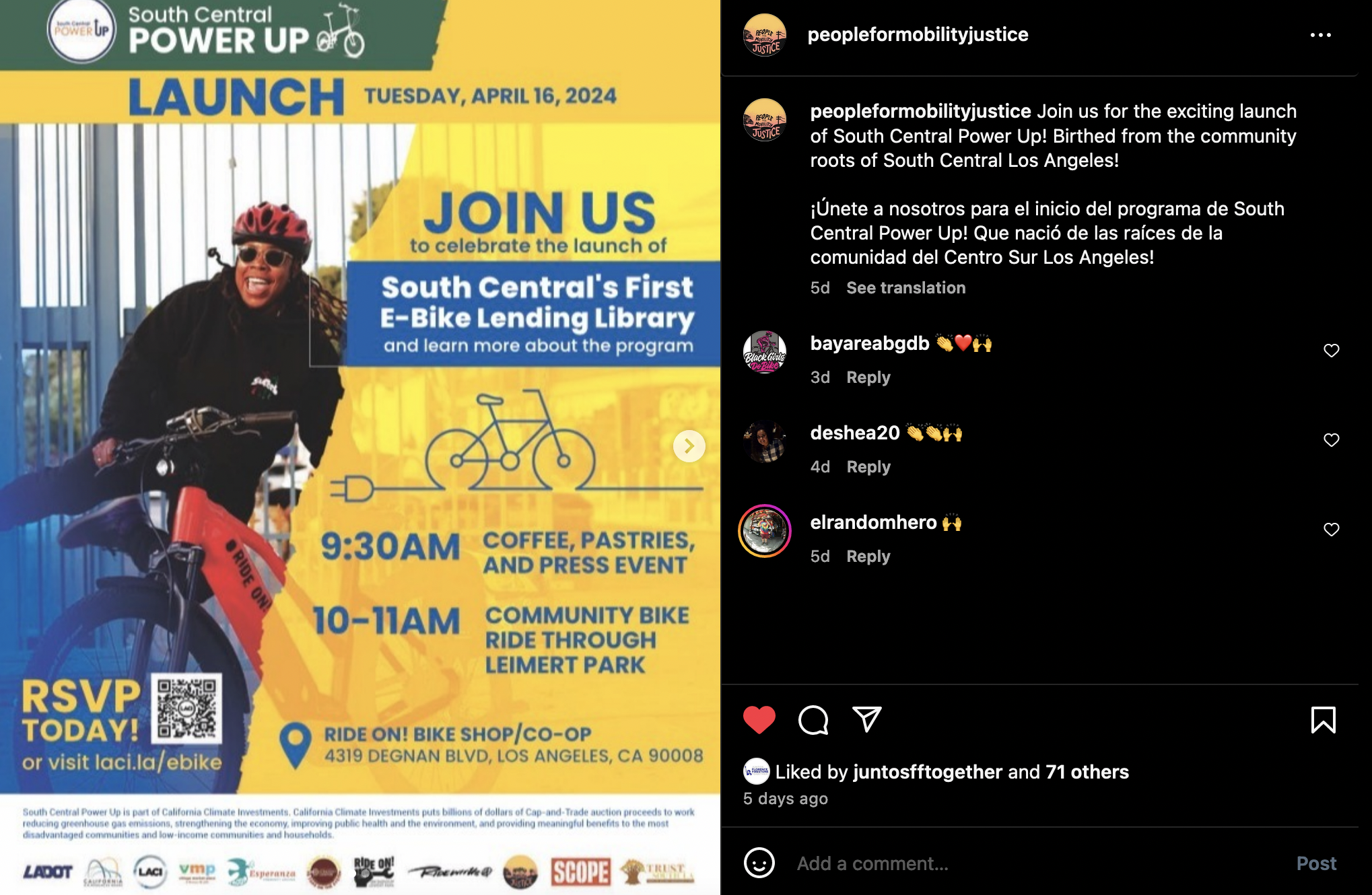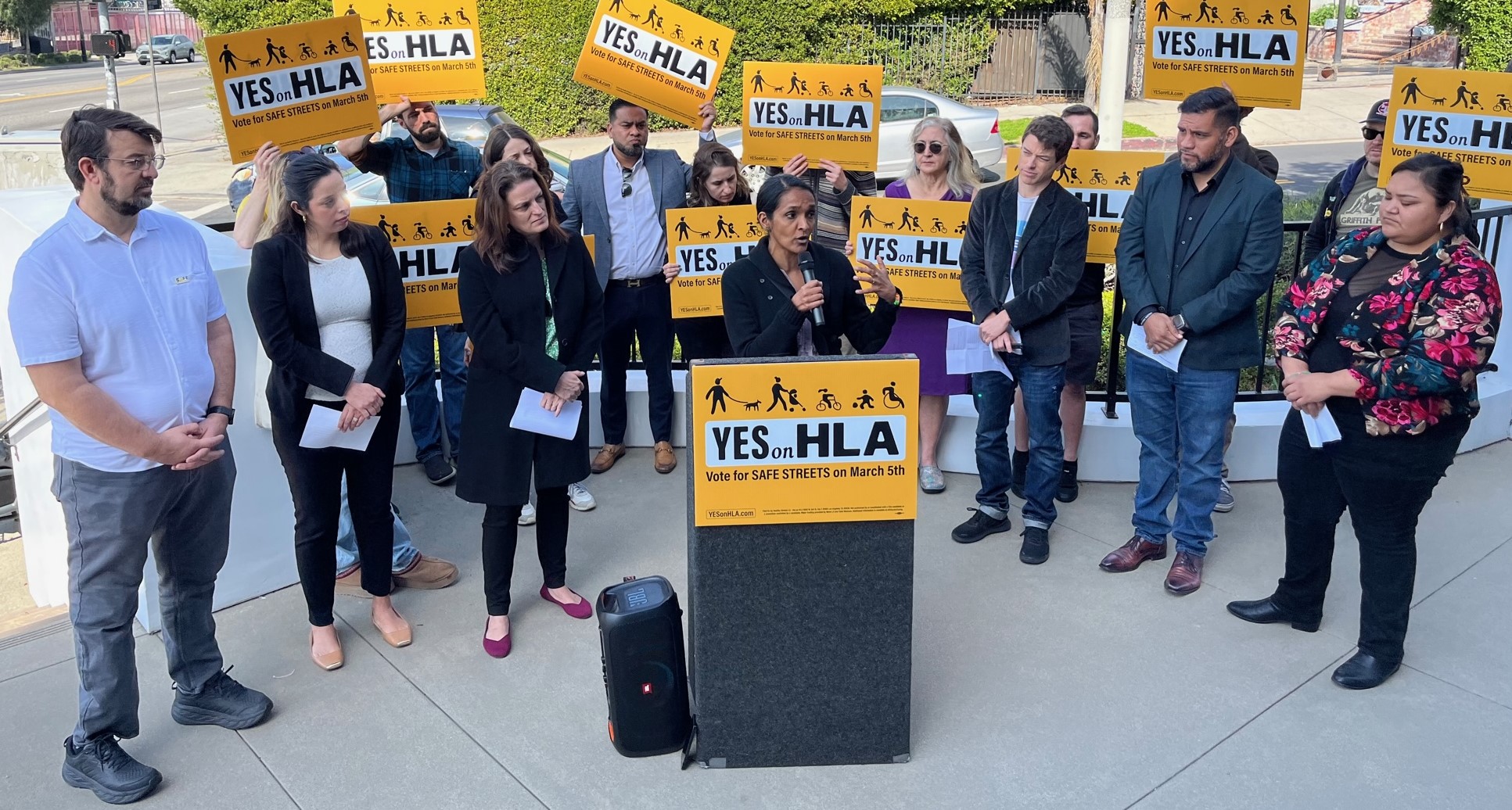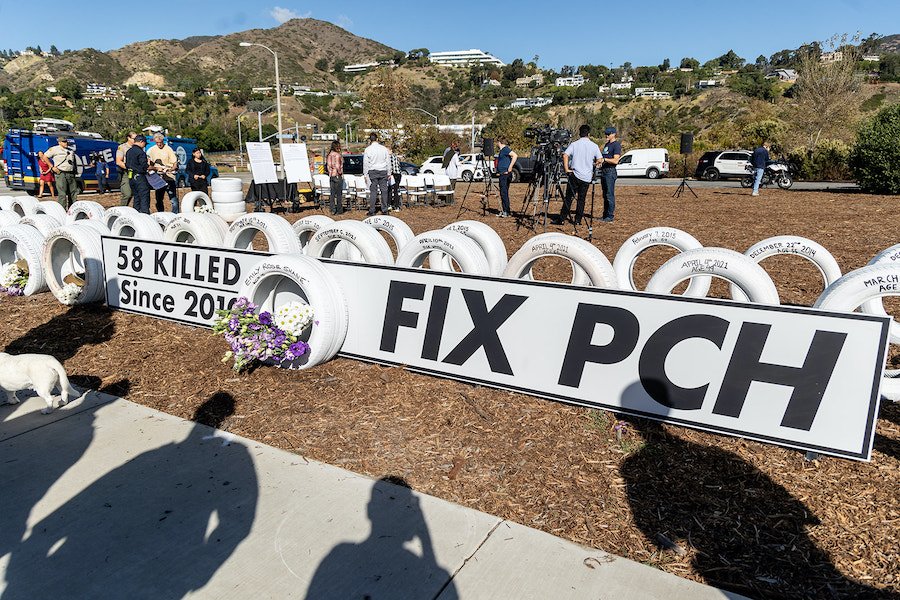Proposition T in Santa Monica is my Candidate for the Worst Urban Planning Idea of the Year.
8:38 AM PDT on October 20, 2008

Photo of Traffic in Santa Monica by Joel and Kristina's Flickr Page
(As we approach Election Day, LA Streetsblog will continue to take a look at the ballot propositions and measures that will effect transportation on this fall's ballot. The following opinion piece is by LEED Certified architect Neal Payton. The title doesn't leave a lot to the imagination as far as his views. If you would like to write a piece on any local or state ballot measure that effects transportation, please contact damien@streetsblog.org)
Proposition T in Santa Monica is
my Candidate for the Worst Urban Planning Idea of the
Year. <
By Neal I. Payton
I know what you are
thinking. This title demonstrates a wee bit of hyperbole, that
it’s a tad exaggerated. Well let me explain my reasoning:
Last Spring, an earnest
and eager young man approached me as I was walking out of my local Trader
Joe’s, shopping bags in hand, and asked, “Would you like to fight
traffic in Santa Monica? We’re gathering signatures to stop,
‘over-development’ by limiting commercial development in the future.
It’s the Residents’ Initiative to Fight Traffic (RIFT).”
Well none of us wants to be overwrought, overweight, or overtaxed, but
those are so difficult to control, so, while I didn’t sign the petition,
I imagine the prospect of not being ‘overdeveloped,’ sounded pretty
good to most of my neighbors, because a measure has shown up on the
ballot in Santa Monica, this November under the innocuous sounding name,
Proposition T.
My biggest problem with
the measure, which caps commercial development (retail and office combined)
in the city to 75,000 square feet per year (about half of the current
average), is that it wont’ work for its intended purpose --fighting
traffic.
Now the Proposition T proponents are
clever and careful to correct me. They don’t claim that RIFT
will reduce traffic, only that it will slow the rate of traffic increase.
So, of course, we’ll never know if it has worked or not, because there
is no base line How do we know how fast traffic would have increased?
How do we know if Proposition T reduced that growth by 10%, 50%, none
or even made matters worse? Another way to frame their argument
it seems to me, is that traffic in Santa Monica is terrible, and the
RIFT backers have crafted a measure that will allow it to get worse
slower than it would have otherwise gotten worse. Sounds amazingly
half-baked, as even my six-year old noted, who said, “that’s just
dumb.” I mean if you went to a doctor, with a chronic and debilitating
disease, and she offered you a therapy that would slow your rate of
decline, but you knew that other therapies existed that, over time,
would actually allow you to see an improvement, wouldn’t you fire
that doctor?
The Proposition T literature loudly
proclaims, in bold type, “Our city’s own traffic consultant says
we can’t fit any more cars or our gridlocked streets.” How is
a measure that acknowledges a problem, but then fails to provide anything
resembling an adequate solution acceptable? (By the way the City uses
a lot of traffic consultants, so I’d like to know which one made such
an inane and unprofessional remark.)
In other words, why doesn’t this measure
attack the root cause of the problem, which is how people get around,
to work, to shop or to play? We know that there are cities with
far greater density with less traffic burdens. The reason, this
measure doesn’t attack the root cause, is that by doing so, the Prop-T
advocates would acknowledge the value of appropriately designed
mixed-use development to the long term health of the city. This measure
uses the traffic as a Trojan horse to fight something more at the heart
of every development issue in the city, which is what kind of City does
Santa Monica want to be? Proposition T backers, would like to put a
wall around this city and freeze it as is.
How do I know? Well again, look at the
literature, from a recent “Yes Prop T” mailing, “And more development
is coming, Lot’s more. Our City Council just voted to INCREASE
new building heights on all of our major boulevards from Wilshire to
Pico to as high as six stories tall.”
So what does this have to do with Proposition
T? Not one thing. Proposition T does not in any way affect
the building heights in the city. This is just a scare tactic.
It is intended to get the reader to distrust all developers, those interlopers,
again from the brochure, “some from San Francisco and Beverly Hills,”
who would continue to do work in this city, and contribute to its evolution
and its tax base.
It is pretty clear to
me that if the well intentioned folks who crafted Proposition T had
spent the time constructing a measure that would be truly effective
at reducing traffic, they would not have chosen such a blunt instrument.
Their tool is the product of a methodology born in the 1960's and refined
slightly, over the next several decades, until its ossification in publications
put out by the Institute of Transportation Engineers (ITE), that have
been, dare I say it, fundamentally discredited by contemporary practitioners
of the art and practice of City and Town Planning.
The ITE's methodology,
based on empirical data from the suburbs, assumed that a certain number
of trips would be generated by each 100-200 square feet of office or
retail space. To this assumption, no mitigating factors were allowed (such
as the fact that someone might walk from store to store, or from home
to work, etc.). Moreover, these assumptions were applied pretty much
equally over the cross-section of urbanism that covers virtually every
metropolitan area of the country (from suburb to inner city).
The methodology also assumed that all parking would be free to the driver
(at least seemingly free. See, The High Cost of Free Parking,
by Donald Shoup, for a complete disputation of that assumption).
Moreover, residential development,
which is unaffected by Prop T, will probably increase as a result
So if one thinks that voting for Proposition T, will somehow change
or overturn what the Council has just passed than they are in for a
disappointment. All that will be achieved is the certainty that this
six-story development is almost exclusively residential, i.e., a mono-culture,
of one use, where the possibility of realizing more walkable areas of
the city are diminished.
Is that all? No.
It also makes unlikely the possibility of creating more humane and pedestrian
friendly edges along its most disgusting corridors, diminishes the city’s
efforts to clean-up abandoned industrial lands, minimizes the likelihood
of the purple-line subway extension into the city, reduces the city’s
effort to fight global warming, is biased against lower income residents,
and seriously stresses the city’s fiscal health. And oh, did I mention
that because it’s based upon flawed assumptions and methodologies,
it won’t work at reducing traffic?
Stay in touch
Sign up for our free newsletter
More from Streetsblog Los Angeles
This Week In Livable Streets
CicLAvia returns to Venice Boulevard, Metro board committees, L.A. City Council Transportation Committee, Metro budget theater, and more
Measure HLA Is Now Officially Law for L.A. City
Check the city maps to find what bus, bike, and walk improvements are coming to streets in your neighborhood




